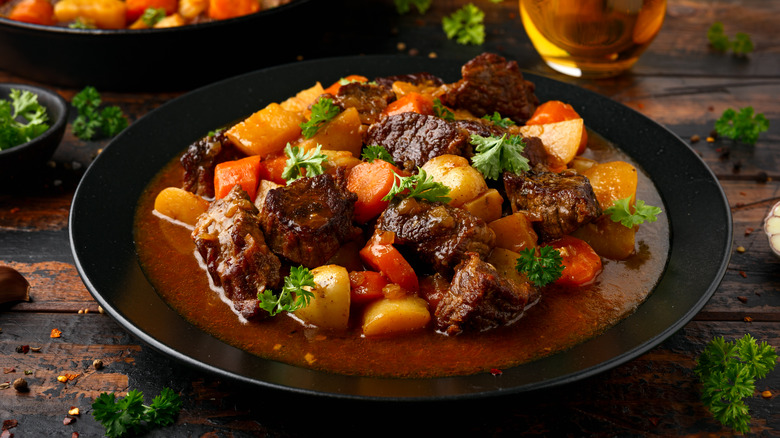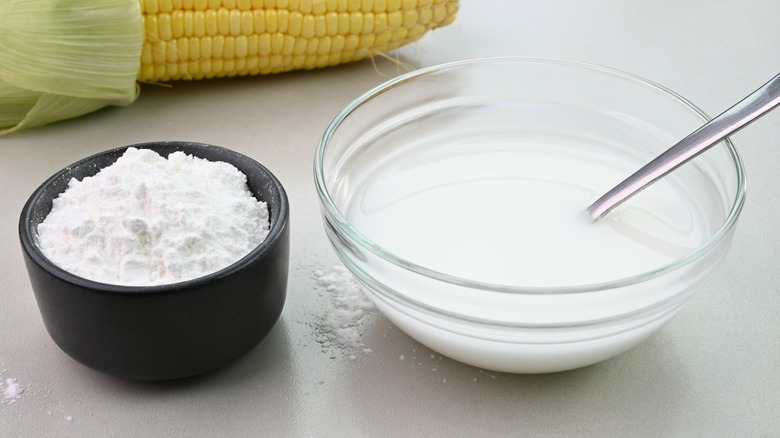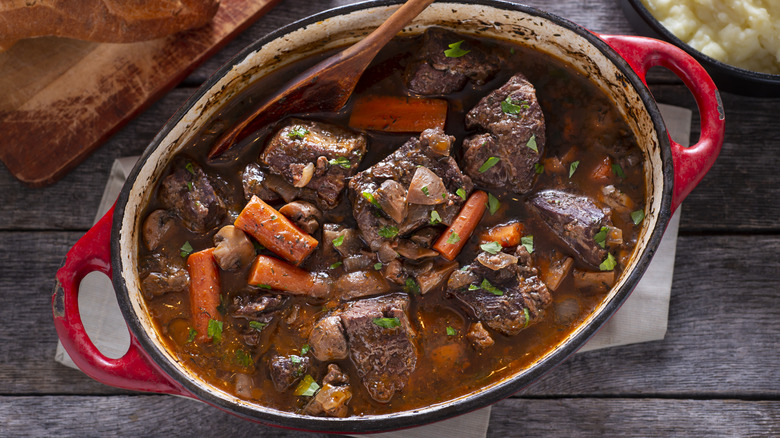Slurry Is The Key To Thicker Beef Stew
Curling up with a blanket on the couch and diving into a hearty bowl of beef stew is the epitome of a comfort food experience, but if the stew is soupy, it's just not living up to the occasion. A savory soup can be a great warming treat, but it's no substitute for a robust beef stew. Stews generally cook longer than soups, which helps create a thicker overall meal, but they can occasionally come out thin. The perfect way to ensure you have a nice, thick stew liquid the next you're craving one is to make a slurry and add it to the dish. A cornstarch slurry will thicken a beef stew in minutes with minimal effort, and without changing the flavor of your dish.
The characteristics that make a stew a stew lie in how the dish is made. Stews tend to let the ingredients within the stew shine, whereas soups focus primarily on a rich, delicious broth. Those thick-cut vegetables and chunks of tender beef in the stew are the stars of the dish. Adding a slurry will shorten the amount of time needed to reduce it, and allow the ingredients you truly want to taste to stand out as you go for another bite.
Correctly using starch as a thickener
A slurry is a simple combination of a liquid and a starch mixed together. The dry component can be cornstarch, flour, or even arrowroot, and the liquid, either water or seasoned broth. For a simple cornstarch slurry, take one tablespoon of cornstarch and add one cup of the liquid you want to use. Whisk these together until a velvety, almost gluey consistency forms (you may need to add more cornstarch if the mixture seems too thin), and, voila, you have your slurry. It's important to use immediately after mixing, as the two will quickly separate, and the starch will stick to the bottom of your container when you try to pour it.
While your stew is simmering, stir in your slurry until well incorporated and no starchy texture remains. You'll soon notice that your beef stew has become substantially thicker and taken on a glossier finish. After it adequately firms up, remove it from the heat so the slurry doesn't break down. It's important that the liquid is cold when adding it to the starch. Adding a starch directly to a simmering soup will make it clump up in your stew. Starches expand when exposed to water, which is why when you make rice you seem to end up with twice as much as you put in.
A slurry is the easiest way to thicken a stew
If a slurry isn't your style, there are alternative solutions to thickening a soup or a stew. One option is to remove a portion of the veggies and liquid from the stew and put them into a food processor to create a puree of those ingredients before returning them to the dish. If you have an immersion blender, you can give your stew a few whisks, and you will quickly see a thicker, heartier liquid portion. Another way to thicken a beef stew is to start with a roux, which involves heating butter and flour before you add any liquid to the dish — almost like doing a slurry backward.
While there are valid reasons to thicken your beef stew by starting with a roux or utilizing the puree technique, a slurry is the most convenient way to accomplish that goal. You add the slurry right before you dive into your meal and notice the results immediately. In a matter of minutes, you can go from a slightly runny stew with plenty of potential to a hearty beef stew worthy of writing home about.


